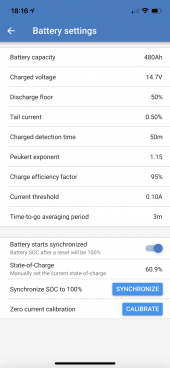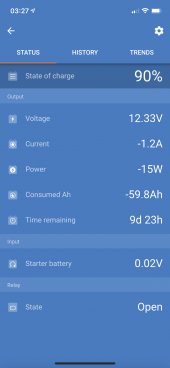Hi Folks
I have 6 x 80AH 12V AGM batteries in parallel.
I run my washing machine off the solar and I've got myself into a situation where I'm discharging from 70% to 60%, and then back up to 70% within 90mins or so maybe 2 or 3 times a day (due to multiple washes).
I know LA batteries have a much more limited cycle life (compared to Lifepo4), but I was wondering how much damage am i doing to my batteries given I'm recharging so fast? Is my damage more limited because I'm recharging so quickly?
I'm not sure if it's relevant to my question above, but I think I bought the "wrong" type of batteries when I started my project. My AGM's are car starter batteries, and not branded as deep cycle or leisure batteries. I've never got a good answer on if there's really a difference, but I guess it's possible my batteries have thinner plates than would be ideal.
Thanks
JT
I have 6 x 80AH 12V AGM batteries in parallel.
I run my washing machine off the solar and I've got myself into a situation where I'm discharging from 70% to 60%, and then back up to 70% within 90mins or so maybe 2 or 3 times a day (due to multiple washes).
I know LA batteries have a much more limited cycle life (compared to Lifepo4), but I was wondering how much damage am i doing to my batteries given I'm recharging so fast? Is my damage more limited because I'm recharging so quickly?
I'm not sure if it's relevant to my question above, but I think I bought the "wrong" type of batteries when I started my project. My AGM's are car starter batteries, and not branded as deep cycle or leisure batteries. I've never got a good answer on if there's really a difference, but I guess it's possible my batteries have thinner plates than would be ideal.
Thanks
JT





